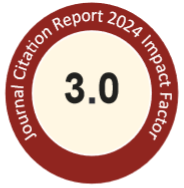Abstract
Nitrate reduction of Escherichia coli O157: H7 was compared with that of four microorganisms, namely, Micrococcus roseus, Micrococcus luteus, Staphylococcus carnosus and Vibrio parahaemolyticus in phosphate buffer solution containing 2053 mg/L nitrate, and the factors affecting nitrate reduction of M. roseus and E. coli O157: H7 were also studied. M. roseus, E. coli O157: H7 and S. carnosus showed similar but stronger reduction activities than the other test microorganisms, showing optimum activity in pH 7 buffer solution containing nitrate. Very little nitrite was formed when pH and temperature were below 5 and 15°C, respectively. Nitrate reduction was significantly increased with cell density and reached optimal level at 4 log CFU/mL. However, the reduction rate was significantly increased with increasing initial cell counts after 24 h incubation. About 80% nitrate was reduced in pH 7 buffer solution containing 503-2006 mg/L nitrate by M. roseus and E. coli O157: H7 at 37°C after 24h incubation, and the reduction reaction was inhibited at nitrate levels above 2006 mg/L. The reduction of nitrate to nitrite by E. coli O157: H7 in pH 7 buffer solutions containing 2098 mg/L nitrate at 37°C reached optimal level after 24 h. Results clearly show that E. coli O157: H7 was very active in the reduction of nitrate to nitrite, the number required to reduce nitrate would be extremely hazardous. Thus, nitrate reduction by E. coli O157: H7 would be inconsequential in real systems.
Recommended Citation
Ko, W.-H.; Chen, B.-H.; and Chiu, C.-W.P.
(2003)
"Effect of incubation conditions on the reduction of nitrate to nitrite by Micrococcus roseus and Escherichia coli O157: H7,"
Journal of Food and Drug Analysis: Vol. 11
:
Iss.
2
, Article 14.
Available at: https://doi.org/10.38212/2224-6614.2721

